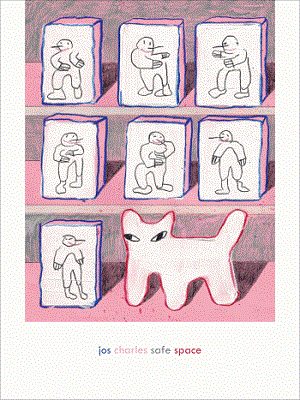 Poetry by jos charles
Poetry by jos charles
Review by T.m. Lawson
I must have read this book of poetry twenty different times in the last few years. Once during a romantic trip with my (now ex) boyfriend; another time, post-breakup, in the tub, marveling at the sheer cut the words brought to my throat; and then another time when I explored my own gender identity and what it means to be trans*. jos charles is a trans* poet and brings a multifaceted presentation of trans* identity to this collection with titles like “Trigger Warning”, “Crave Panopticon”, “Public Health”, “Seagull, Tiny”.
jos attempts different approaches to communicate this state of ‘in-between’ with specific techniques, like alternating from the capitalized pronoun, a confident “I”, to the lowercased submissive almost-youthful “i” close to each other, sometimes on the same line. Pronouns are a preoccupation here in Safe Space; for instance, “them” and “they” are no longer Otherized but reclaimed by the trans* self as an integral part of the identity. “You” is shortened to the Internet/mobile culture “U/u”. Think of pronouns as directions on where to turn and what horizon to seek while jos plays with bodies as landscapes and architecture.
“[W]hat is the use / of being a woman, unless to be gathered / […] What is the relation of the body as site and / the investments that site is said to receive”, to which jos quips, “i am all asshole”. In “Insert_Eye”, a claim that “[a] woman ought not to be put / in the dative”, as in a woman should not be regulated to rules since a dative is a process of grammar used to “denote a case of nouns and pronouns, and words in grammatical agreement with them, indicating an indirect object or recipient.” A woman is what is “gathered”, jos peppers this thought in italics throughout the collection, just as a dative relates primarily (but not always) to giving, connected to the cultural perception of a woman as “giver” of whatever was “gathered”, whether her self, or herself.
It’s jos’ underrated approach with the way they use the language that makes this book re-readable, despite the cuts they bring. And what makes it especially deep is that speaker can take the audience to a point within the poetry and suddenly break contact with content, leaving us wanting. jos confronts queerness as “the gay” when the speaker recounts confrontations with family, lovers, and the self (as they transform).
In “Origin as Wetdream”, where “[they come with fear, u know it well, / to colonize the self”, jos rails against the “causal violences” that propel this transformation, already latent and underground like tectonic plates. The potential for the activity of movement and change is already there. jos is only ripping off the skin so you could see it for once, while playing around with the words like a sex act. The double and triple play that jos pulls on them is titillating to say the least, once you get used to the shock of the more obvious things that is slapped onto the reader’s face. Overtly homoerotic, scatological, pedophilic, and abusive images compete with healthy (and unhealthy) sexual habits: fellatio, facials, among other acts.
I was told i had speech issues / I would often misuse // my a’s Warm became worm / harm became home // I’ve mostly figured words out / except with a cock in my mouth // u swallow and take a body / out a body Later u shit a body
“Trigger Warning”
At one point, jos’ speaker poses rhetorically, “What does language / of proof afford?” What can language bring to the table that can benefit us? It seems to constrict us rather than liberate, and yet jos is doing exactly that: a liberation of their identity. In “Crave Panopticon”, there is a sequence of famous women, most of which are contemporary pop culture icons (Lana Del Rey, Yoko Ono, Rihanna, Taylor Swift) that juxtapose against historic ones (the Medieval writer, Christine de Pizan; gay activist, Marsha P. Johnson; the classical Japanese poet, Princess Shikishi; transgender activist, Sylvia Rivera, to name a few) before the poem opens into a chorus of their combined voices:
As one they seemed to sing, […]
‘i took it from dad,
i took it from every dune,
i took it from mountains,
from prisons, from prisons, […]
i took it from the mouth of boys,
and in the mouth of my one tyger lip,
i took of my breasts and gave my breasts
(a woman is what is gathered)
i took of my cock and gave my cock
(a woman is so much of what is gathered)
i gave my skin and took my skin
and was called beautiful commode
and utter shit of darkness, […]
and sylvia called me ‘child’
and clarice called me ‘sea’
and ariana called me ‘suckling’
and yoko called me ‘cut’
and shikishi called me ‘summer’
and christine called me ‘tower’
and taylor called me ‘trembling’
and lana called me ‘girl’
and ella called me ‘witched’
and nina called me nothing
and marsha called me ‘crisis’
and rihanna howled ‘sorry o god i’m sorry’
and i wept, having many names and being alone in that night
It appears easy to read the way Safe Space is set up: simple words, slang, short lines, but this is deceptive. It is actually one of the hardest poetry collections I have ever read, much less reviewed. Every time I read it, a new idea or observation pops up, which is the best indication that jos layered their work with impressive complexity.
my american // corpse has been such / a disappointment // I would live on feeling safe and spilling secrets / […] It is confusing that / words trick us
“Seagull, Tiny”
The book is also uniquely American primarily because it taps into the pulse of a reaction to the inclusion (and exclusion) of those outside of heteronormative tradition and background. The speaker in “Seagull, Tiny” mulls on the American experience, proclaiming that “[t]he united states / is a collective / process of / demanding feelings / and a certain memory”, a tug-of-war between nostalgia and tradition, and the immediacy that technology has brought to the table, the rapid change that is encouraged, inspired, and even spurred by the language that jos appropriates into Safe Space. Just know that once you enter this book, it can be almost everything but.
Safe Space is available now through Ahsahta Press.

 Chapbook by Seth Pennington
Chapbook by Seth Pennington Essays by Fleur Jaeggy
Essays by Fleur Jaeggy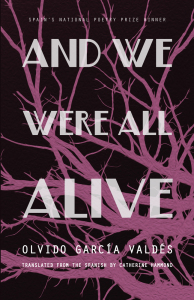 Collection by Olvido García Valdés
Collection by Olvido García Valdés Review by Liz von Klemperer
Review by Liz von Klemperer Standing on Earth, by Mohsen Emadi
Standing on Earth, by Mohsen Emadi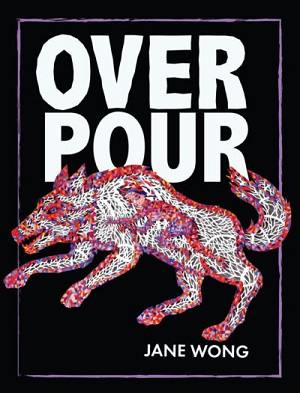 Overpour, by Jane Wong
Overpour, by Jane Wong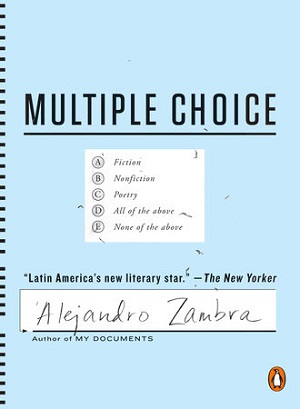 Multiple Choice by Alejandro Zambra
Multiple Choice by Alejandro Zambra Luna Park, by Luis Cardoza y Aragon
Luna Park, by Luis Cardoza y Aragon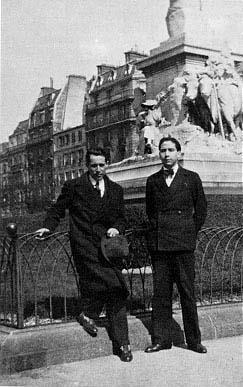 Luna Park (1924, 2016) is Luis Cardoza Y Aragón’s first collection of poetry. It is translated from the Spanish by Anthony Seidman, thrust into the thick of this decade’s hazy Twitter feed by Alan Mills, and steeped in the kinetic energy of Daniel Godínez-Nivón’s graphics.
Luna Park (1924, 2016) is Luis Cardoza Y Aragón’s first collection of poetry. It is translated from the Spanish by Anthony Seidman, thrust into the thick of this decade’s hazy Twitter feed by Alan Mills, and steeped in the kinetic energy of Daniel Godínez-Nivón’s graphics. Forbidden Fruit, by Stanley Gazemba
Forbidden Fruit, by Stanley Gazemba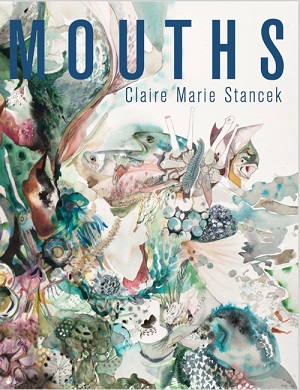 Mouths, by Claire Marie Stancek
Mouths, by Claire Marie Stancek Confetti-Ash, Selected Poems of Salvador Novo
Confetti-Ash, Selected Poems of Salvador Novo